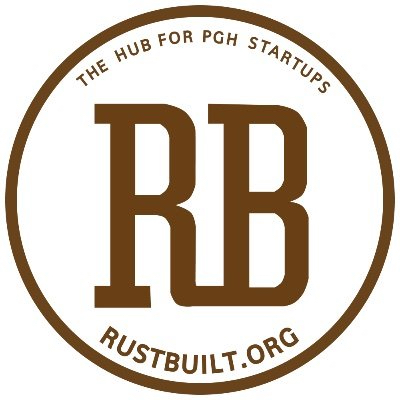Since the early 19th century, the Steel City has served as home to some of the world’s most prominent companies — including, of course, those representing the industry from which its nickname originated. In the latter half of the 20th century, Pittsburgh’s corporate community diversified, with the rise of healthcare, technology and financial services companies as key stakeholders. Today, it’s home to 10 Fortune 500 companies that employ thousands of people and keep Pittsburgh a thriving economic hub.
More recently, due to the rapid pace of technological change, Pittsburgh’s corporate community is increasingly collaborating with the region’s startups and high-growth companies alike to develop new innovations, improve existing products and services, and strengthen their overall outcomes. That includes partnerships in sectors where the region excels, like advanced manufacturing, life sciences, robotics and AI. Take this collab between US Steel and Carnegie Foundry or Pittsburgh International Airport’s xBridge Innovation Center as recent examples.
How can Pittsburgh companies continue this legacy and best develop their own innovation practices?
Corporates, meet startups
A leading figure in bridging the regional corporate and startup communities is Sean Ammirati, who is cofounder and director of the Carnegie Mellon Corporate Startup Lab, a venture capitalist, and repeat startup founder. Ammirati believes there are two main ways that local companies can work with regional startups:
- Outside-in approach — Partnering with a local startup to develop a new product or service. This can be a great way for companies to get access to new technology and ideas, and to shorten the time it takes to bring new products to market.
- Inside-out approach — Launching an internal accelerator or innovation program. This can help companies to foster innovation within their own organization, and to attract and retain top talent.
“Some of it is certainly that companies — not just in Pittsburgh — are realizing more and more that the pace of change is accelerating faster than ever,” Ammirati said. “The truth that was always true is that the things that made the most successful companies relevant will not always keep them relevant. … The half-life of large companies is already shortening.”
Companies that are serious about leveraging innovation need a defined process for identifying and engaging with startups, he said. They also need a strong commitment from their leadership. The reality is that the rate of change is increasing so dramatically that companies need to focus more attention and resources on these types of initiatives if they want to remain competitive and relevant.
Megan Guidi, founder and CEO of The VIB Group, has helped numerous corporations launch and improve their innovation processes over her career. She has found that corporations often have a higher burden of consensus and proof than entrepreneurs tend to have, which can lead to good ideas being abandoned. What can happen in the time it takes for a corporation to make a strategic decision can be longer than the moment in the market where the idea is still novel, necessary or competitive.
“A lot of really good ideas inside the enterprise have died on the vine due to the pace of decision making and action taking.”Megan Guidi The VIB Group
“There’s no shortage of good ideas inside an enterprise, but the challenge can be identifying them and properly bringing them to market,” Guidi said. “In order for these ideas to become impactful to the organization, they need to have passionate internal ‘founders,’ a long-enough runway to see their vision come to life, and a process for decision making that includes key stakeholders and decision makers. A lot of really good ideas inside the enterprise have died on the vine due to the pace of decision making and action taking. It can be hard to innovate inside a company when it’s the last thing on your desk after your daily duties.”
Guidi offered two main recommendations for how corporations can improve their innovation outcomes:
- Streamline decision-making — Creating processes for evaluating new ideas that are quick and efficient. This will help to ensure that good ideas are not lost in the bureaucracy, and timely action can be taken.
- Develop a better culture of innovation — Creating an environment where employees feel comfortable sharing new ideas and taking more risks. This can be done by providing training on innovation, rewarding employees for their ideas, and creating spaces where employees can be more collaborative.
Capitalizing on a legacy of innovation
Back to Pittsburgh’s long history of innovation: The wealth created in the 19th century from the steel industry would go on to fund innovation into the 20th and 21st centuries, according to Ron Schuler, a leading attorney and author of “The Steel Bar,” a legal history of Pittsburgh’s business community.
“We had the resources, we had the talent, and we had a lot of the key ingredients,” Schuler said. “But true innovation is what really started and grew the major industries here.”
Then, those who applied what were the latest technologies to build large industries used their resources to help start and grow Pittsburgh’s major universities, where innovation continues to drive our region to this day.
“The universities are leveraging the talent that they have in Pittsburgh to become major US research institutions, which then attracts the people and federal and philanthropic dollars that then drives more innovation.”Ron Schuler Author
“That was the beginning of the long cycle that I think we’re still in,” Schuler said. “The universities are leveraging the talent that they have in Pittsburgh to become major US research institutions, which then attracts the people and federal and philanthropic dollars that then drives more innovation.”
How does the city’s history impact today’s business pros?
“In both big and small ways, Pittsburgh has been at the center of a lot of transformational thinking over the years, and we should be proud of building on this legacy,” Guidi said.
Her last bit of advice: Consider internal attitudes.
Corporations can capitalize on Pittsburgh’s legacy by establishing a clear permission structure for innovation, and thinking about the signals they send to employees that say, “We do (or don’t) innovate here,” she said. These internal signals make clear what is prioritized, shared and rewarded.
Before you go...
Please consider supporting Technical.ly to keep our independent journalism strong. Unlike most business-focused media outlets, we don’t have a paywall. Instead, we count on your personal and organizational support.
3 ways to support our work:- Contribute to the Journalism Fund. Charitable giving ensures our information remains free and accessible for residents to discover workforce programs and entrepreneurship pathways. This includes philanthropic grants and individual tax-deductible donations from readers like you.
- Use our Preferred Partners. Our directory of vetted providers offers high-quality recommendations for services our readers need, and each referral supports our journalism.
- Use our services. If you need entrepreneurs and tech leaders to buy your services, are seeking technologists to hire or want more professionals to know about your ecosystem, Technical.ly has the biggest and most engaged audience in the mid-Atlantic. We help companies tell their stories and answer big questions to meet and serve our community.
Join our growing Slack community
Join 5,000 tech professionals and entrepreneurs in our community Slack today!

The person charged in the UnitedHealthcare CEO shooting had a ton of tech connections

From rejection to innovation: How I built a tool to beat AI hiring algorithms at their own game

Where are the country’s most vibrant tech and startup communities?




